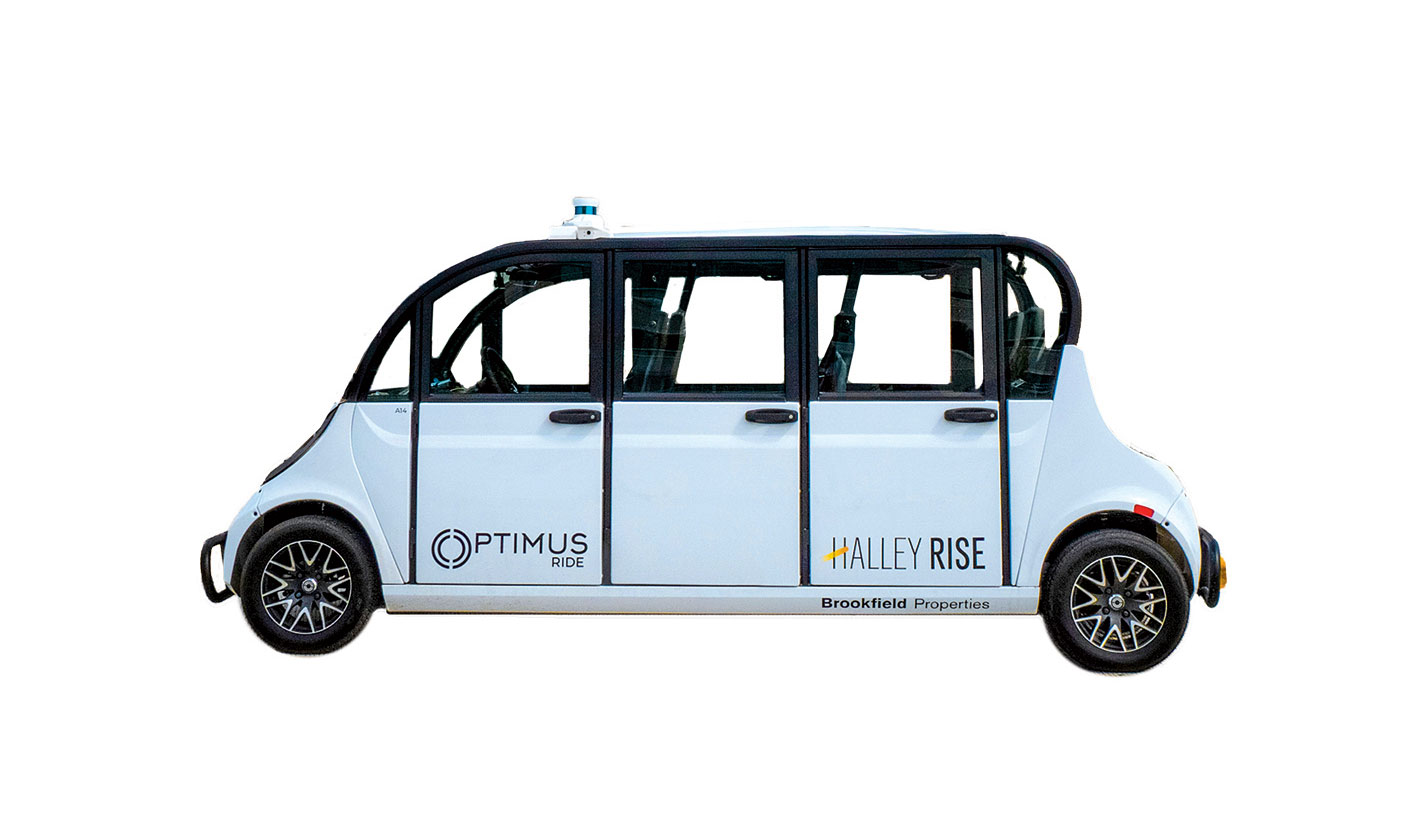On a dull stretch of parking lot at the Halley Rise mixed-use development in Reston, the car of the future has arrived. Called Optimus Ride, it began ferrying intrepid pioneers—or at least curious commuters—in August.
We recently went to give it a try. The three cars—free for anyone who works in the complex—come with a “safety operator” who sits in what would be the driver’s seat, but the vehicle runs on its own. Otherwise, the experience was familiar: Settle into a seat, strap on a safety belt, and you’re off. Soon the car was chugging along at a brisk ten miles per hour, headed toward the outer frontier of technological exploration (or, more precisely, the edge of the office park).
It wasn’t exactly thrilling. “Like, literally, it is a boring ride,” says Ryan Chin, who cofounded Optimus with five buddies from MIT. But that is precisely what’s radical: For self-driving cars to truly affect the way we live, Chin thinks, using them will have to become as routine as driving your Civic to the supermarket. The Optimus cars can travel only around the Halley Rise complex; the route could expand to include the future Reston Town Square Metro station.
Optimus’s research suggests that the novelty wears off quickly. After two trips, Reston riders tend to forget that the car is driving itself and go back to twiddling with their phones. To Chin, that sounds like progress. “We’re not deploying the technology as a demonstration,” he says. “We’re deploying it to solve a problem.”
This article appears in the December 2019 issue of Washingtonian.



















